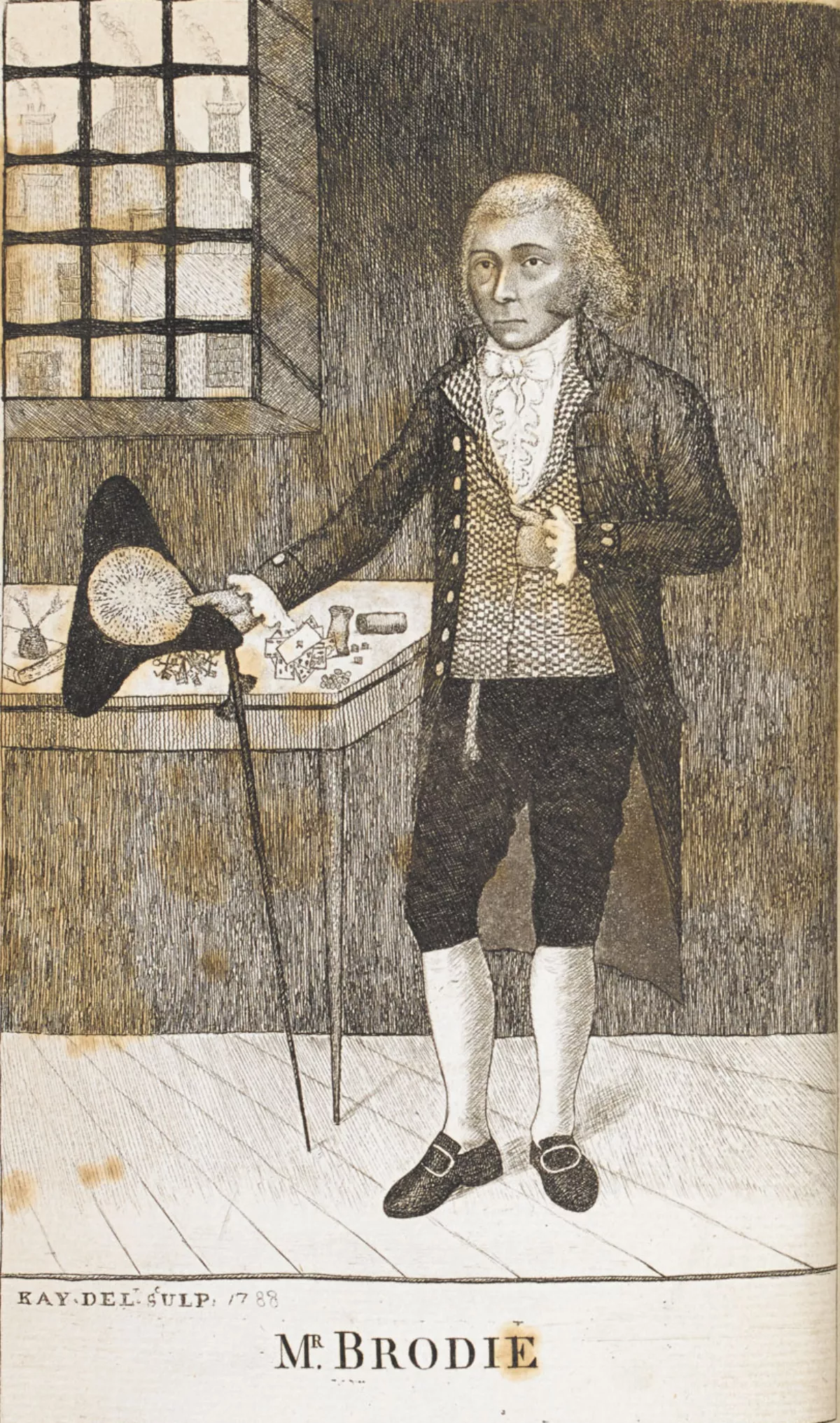 1.
1. William Brodie, often known by his title of Deacon Brodie, was a Scottish cabinet-maker, deacon of a trades guild, and Edinburgh city councillor, who maintained a secret life as a burglar in order to support his mistresses and to fund a gambling addiction.